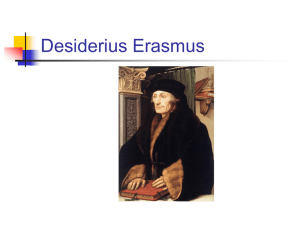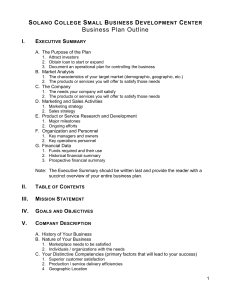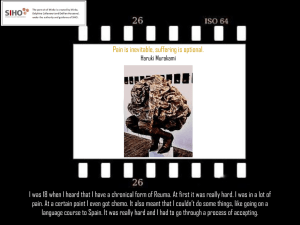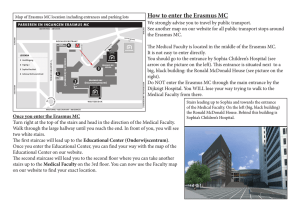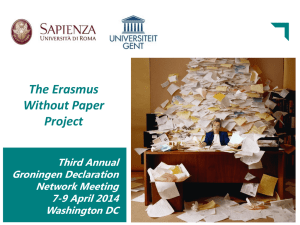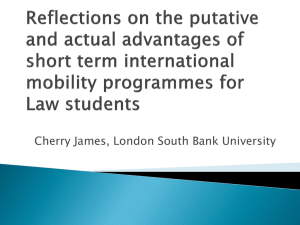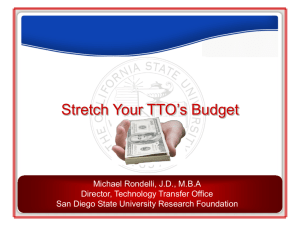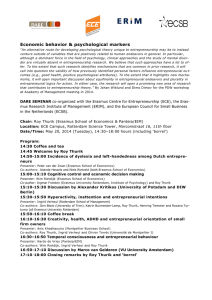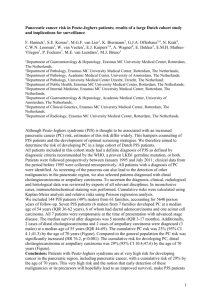How to organize a technology transfer office?
advertisement
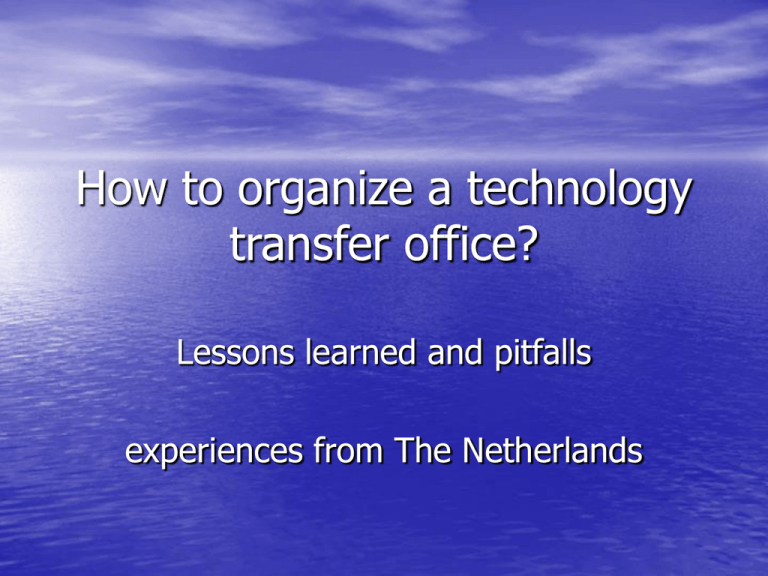
How to organize a technology transfer office? Lessons learned and pitfalls experiences from The Netherlands Louise van den Bos • Director of Technology Transfer & Licensing • Erasmus University Rotterdam, The Netherlands • vice president ASTP • Association of European Science and Technology Transfer Professionals Erasmus University Rotterdam • 7 Faculties/Schools & Rotterdam School of Management • 20.000 students • 3500 employees • budget 2002 EURO M260 History • 1979 - 1985 establishment of so-called transferpunten at 13 Dutch universities • 1985 - 1989 funding by the Ministry of Economic Affairs • Aim: making available the existing body of science and technology to industry, esp. SME’s • 1989 and onwards: discussions about role and function of transferpunten Lesson learned • define your mission very well • have it approved by the academic community • support by the Board of the University and the Deans is essential, but ….. • Support by the scientists is even more essential Structure • Transferpunt established in 1984 • office in the central administration of the university • until 1995 working for all the faculties/schools • from 1996 - 2003 specialized TTO for the Medical School and the University Hospital • 1995 establishment of Erasmus Holding company- aim transparency Structure TTO • 4 - 5 fte • 1 commercial /business person • 1,5 legal advisors with commercial background • 1 advisor from the business community • 1 office manager • 0,5 secretarial support Output per year • 150 requests for extensive support of researchers • 60 -70 agreements ( MTA/Research Agreements/License agreements/Strategic Alliances) • yearly research income from industry for the MedicalSchool < EURO M 20 • royalty income difficult to trace - university administration! Patents • Until 1995 Professor’s privilege, but…. • Professors prepared to bring their inventions under the university umbrella • Patents often filed in the name of the university • 1995 revised Dutch patent law: • employer retains the rights in inventions, also the universities,but the inventor has to Patents • Until 1998 IPR were mostly regulated in early stage Research & License agreements • due to the developments in the USA and the • upcome of the Life Sciences the University was forced to file patents in her name; • we have now about 50 patent families in portfolio Lesson learned • Filing patents is one thing • Defending patents is costly • Be prepared, also financially for unpleasant • surprises • Monitor your patents and licenses regularly Present situation • Huge reorganization: • merger of Medical School and University • Hospital into Erasmus MC • TTO transferred to Erasmus MC • TTO based on the Administrative model Present situation • Holding company partly dissolving • Erasmus MC will establish their own company- 6 subsidiaries of the Holding will be transferred • Deans of the Schools of Economics and Business Administration want to integrate the businessactivities in their resp.Schools • 1 subsidiary nearly was bankrupt last year.```` Lesson learned • Importance of networking for the exchange • of information / advise / experiences • set up a Norwegian network • make use of existing networks such as AUTM in the USA and ASTP in Europe.
